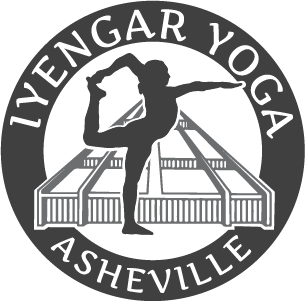Thoughts on Iyengar Yoga
by Randy Loftis
I typically avoid the topic of what is or is not Iyengar Yoga. I find it disheartening to hear people so narrowly define the subject that I find so liberating. I recently saw a magazine article trying to help students find out what kind of yoga is for them. The article went on to carve out niches for the different “brands” of yoga. Ugggh. In February of 2019, while studying at the Iyengar Institute in Pune, India, I had time to reflect on this topic. When I came home, I decided to put my words on paper and share my thoughts about what Mr. Iyengar achieved in his 80 years of practice and teaching. Here is what I came up with:
Yoga master B.K.S. Iyengar (our Guruji), who passed away on August 20, 2014, at age 95, is perhaps the most important yoga teacher of the 20th century. He is known for using his body as a laboratory to study the innermost depth of his being. He would talk about how he tasted all the fruits and figured out what is poison, so that what he gave us was pure nectar. He did not, however, call what he did “Iyengar Yoga.” He called it “Patanjali’s Yoga” in honor of the great sage, who compiled the Yoga Sutras about 2500 years ago. As is human nature, though, we unfortunately get hung up on names and try to put Iyengar Yoga in a box.
Iyengar Yoga is often described as alignment-based yoga. As a student, practitioner, teacher, and Iyengar Yoga studio owner, I find this term frustratingly misleading. What I will say is that Guruji carefully and methodically showed us the way, step by step. I heard his granddaughter, Abhijata, say that Iyengar Yoga deals with the tangible. In other words, there are concrete instructions, techniques, and even methods that can be felt, understood, and attempted at the level of the individual practitioner.
As an example, good poetry is not a random list of contorted words and a poem is more than the sum of its parts. It can evoke symmetry, beauty, synthesis, and equanimity. Iyengar Yoga is like poetry and Iyengar’s yoga was not a collection of contorted or disconnected body parts. With balance and grace, he was able to distribute his awareness throughout his body, so that nothing felt or looked strained or contrived. If you have not done so, look at pictures of Guruji practicing. You can find them in his books or online. Look at the expression on his face and notice the serenity in even the most challenging poses. I have heard it said that we need to be less concerned with what is “Iyengar Yoga” and more concerned with what was Iyengar’s yoga.
All this said, there is no box for Iyengar Yoga. It is simply yoga, practiced with intelligence, taught by teachers who teach from experience, with depth and understanding. As his life came to a close Guruji would say, “Let my end be your beginning.” He must have truly recognized the journey ahead for each of us, our potential to learn, and that the power of this practice would continue.
I hope to see you at practice,
Randy

